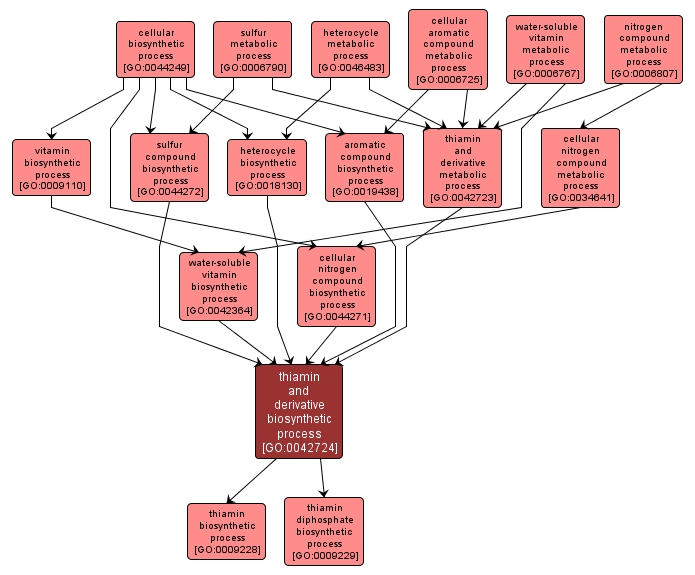GO TERM SUMMARY
|
| Name: |
thiamin and derivative biosynthetic process |
| Acc: |
GO:0042724 |
| Aspect: |
Biological Process |
| Desc: |
The chemical reactions and pathways resulting in the formation of thiamin (vitamin B1), and related compounds. |
Synonyms:
- thiamin and derivative formation
- vitamin B1 and derivative biosynthesis
- thiamin and derivative anabolism
- thiamine and derivative biosynthesis
- thiamine and derivative biosynthetic process
- thiamin and derivative synthesis
- vitamin B1 and derivative biosynthetic process
- thiamin and derivative biosynthesis
|
|

|
INTERACTIVE GO GRAPH
|














